The Article
R-N602 From Yamaha: On The Receiving End
19th October 2016
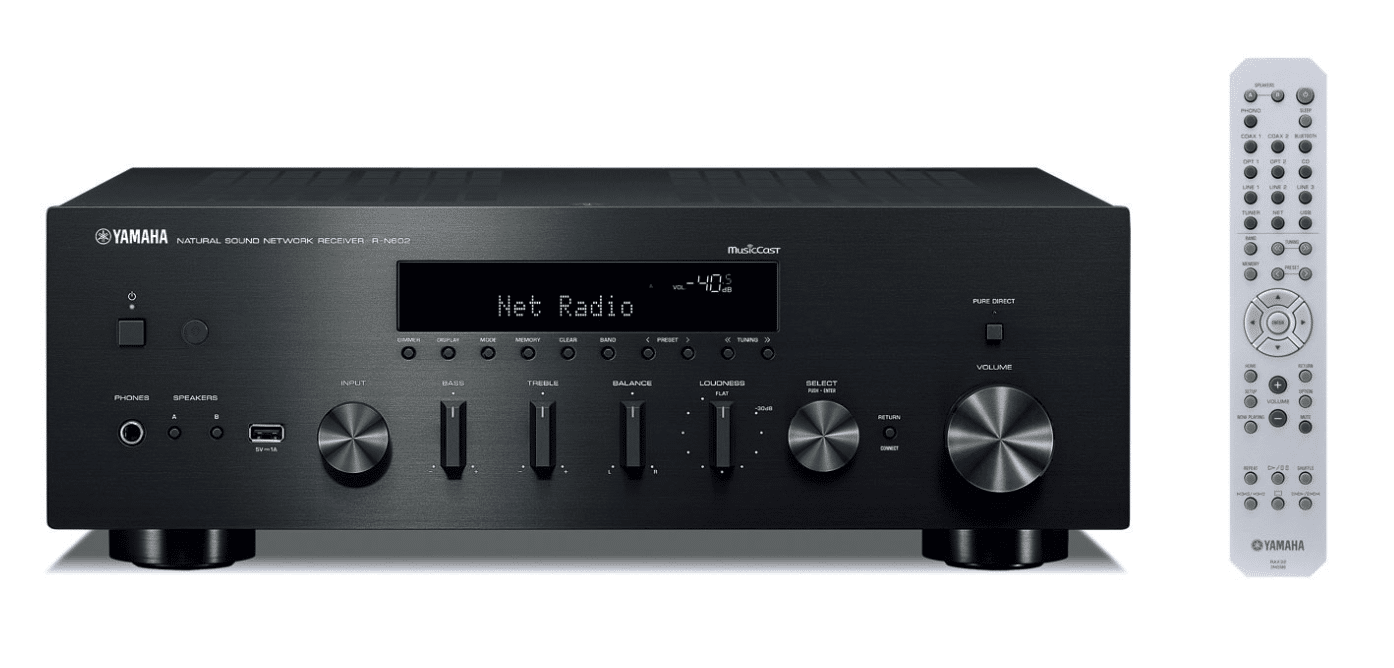
Sporting a retro amplifier design but packing in numerous digital and networking facilities, Paul Rigby reviews Yamaha’s budget receiver, the R-N602
It’s big, it’s meaty, it’s got buttons and switches and knobs and it’s shiny (silver) or its so dark that light falls into it (black, what else?) and you could put caterpillar tracks underneath it and invade a small neighbouring country without a shot being fired because the populous would run away from it, hands in the air, screaming hysterically. This is Yamaha going back to its 70s roots. You don’t look horizontally at the R-N602, you walk up to it, pause, then you lift your head slowly and see if you can make out the summit…somewhere in the clouds.
You also don’t turn on a 115W R-N602 via the on/off button, you send it a letter of introduction and then wait for permission.
While doing so, you can note that the R-N602 is designed to be used as part of Yamaha’s MusicCast network audio system that allows you to use all your MusicCast products together or separately, controlled from one app which, of course, also means popular streaming services (where applicable in supporting countries) such as vTuner internet radio, Pandora, Rhapsody, Spotify, SiriusXM, Napster and Juke. On the networking subject, the ‘Yammie’ also supports AirPlay, DLNA plus Digital Blocking (an iPod’s direct signal is sought feeding the Yamaha’s own DAC). An ECO mode reduces power by 20%, you have access to Bluetooth, Wi-Fi plus a Pure Direct button to bypass the majority of the amp’s electronics to enhance sound quality.
In terms of files support, the Yamaha supports 5.6MHz DSD and AIFF 24bit/192kHz, WAV/FLAC 24bit/192kHz plus the usual suspects via a Burr Brown DAC. There’s also a FM/AM tuner, speaker terminals for two systems and, oh yes, the ability to plug a turntable directly into the box because you get a phono amp, built-in. More about that later. Other sockets around the back, apart from plentiful source RCA-based connectors, include two opticals, two coaxial, a wireless port for a screw-in aerial plus the ability to connect Ethernet and a subwoofer.
IN USE
It’s bulky, retro and clunky. In fact, the hefty and expansive Yamaha glories in its retro clunkiness. It comes at you, arms open with that certain ‘look at me!’ exclamation as it displays hulking great knobs that control those old classic controls: treble, bass, balance and, don’t forget that old favourite, ‘loudness’, sitting next to more modern additions such as the USB source socket. Some might question the inclusion of such controls and I would agree that the treble/bass/balance/loudness quartet are worse than useless. That said, the Pure Direct removes any criticism because it allows the sound signal to skip right past them. Hence, their inclusion could be seen as ‘a bit of fun’. In these design terms and for this price…sure. Why not? The target audience, many of which will be maturing beginners with hi-fi experience that relates to their parents old system, may even see the inclusion of such controls as a comforting familiarity.
SOUND QUALITY
I began by spinning Buffalo Springfield’s For what It’s Worth (1966) on the Leema Elements CD Player. Three things hit me immediately. Firstly, the bass was very strong and punchy. Yamaha likes its lower frequencies and the performance here maintains the house sound which means that this track offered excellent bass force and foundation. The song was driven throughout with a strong rhythmic drive that gave the track an enhanced sense of pace.
There was a lack of engagement, though. By that, I means that the soundstage did sound a little stark. It was almost as if the guys played in a studio that was, by day, an operating theatre. There was a slight lack of soul and musicality in the R-N602s presentation so that the drums never really connected with the guitars or the emotional vocals. Then I noticed that the Pure Direct button had not been engaged. Turning this feature on bypassed much of the amp to provide a more direct sonic pathway. This improved the sound quality immeasurably, giving the vocals a more, well, human quality with delicate textures from the vocal chords more in evident while the guitars offered greater grit and involvement. Despite the good news, though, a certain analytical edge remained but the effect was greatly reduced in Pure Direct mode.
The sense of clarity from the upper midrange and treble enhanced the tonality of the music while there was tremendous instrumental separation around the soundstage so the band sounded relaxed and at ease with their playing. There was never any sense of tension. The air and space exhibited also gave the frequencies time to decay properly which enhanced the performance of these organic instruments, increasing detail.
These days, I only tend to handle MP3 files with rubber gloves and a pair of forceps but playing Kylie Minogue’s All the Lovers from her Abbey Road Sessions album in this execrable sound format sounded half decent via my Apple iPhone 6S over Bluetooth. There was plenty of room to be had while midrange and bass existed in an admirably balanced manner. Strings were thin and nasty, yes while Minogue’s vocals made her sound like she had a pinched face (I imagined her as the green-faced witch in the film, The Wizard of Oz, MP3s made Kylie sound just like that) but, even given the lack of musical data, the Yamaha performed tremendously to give you the best performance it could. As if the amp was exclaiming, “Look, guv, I haven’t got much to work with here…but this is the best I could do.” I’ve heard a lot worse, even via equipment price higher than this receiver.
Using a USB stick, I played the DSD version of the Allegro for Bach’s Concerto for Harpsichord, Flute and Violin via the front loading USB port and was pleased to hear the relatively spacious digital performance of the R-N602 continue here. Strings and the wind section did sound a little thin and slightly forced, though, even at this high resolution. The performance basically allied itself to the earlier CD tests, in this respect. That said, there was much to admire with the informative nature of the track giving this textured and detail arrangement time to manoeuvre while allowing complex instruments such as the harpsichord a chance to express itself.
Up until now, we had a reasonable digital power house that looked great on paper but offered no more than a ‘credible’ performance in reality.
Then something wonderful happened.
I wanted to test the internal phono amp of the Yamaha. At this price, it is more likely that users will be utilising the internal module and not spending out for an external phono amplifier. Pushing an analogue signal through this unit was fascinating because the results were surprisingly good. The slightly sparse nature of the presentation combined with the epic quality of the phono amp and the warmth of the basic vinyl signal to provide a big, bold, open and grand musical return. Trumpets sounded clear and brassy without a hint of stridency or brightness, saxophones were reedy and emotive, vocals offered a precision and enhanced diction and bass was firm, fast and informative. This heady mixture was quite a sonic revelation for the price!
CONCLUSION
The Yamaha R-N602 offers plenty of value for the money and a wide array of features with an appealing retro design. Despite the slightly constricted digital response in CD and general digital file terms, I was blown away by the analogue play and can whole heartily recommend this amplifier if you are looking for an amplifier to act as the heart to your vinyl hi-fi system.
In fact, I would go further than that and advise you not to look at this box as a multimedia receiver at all. Me? I would not buy it for its digital features. I would turn the feature list on its head. I would see this product as the amp section of a new vinyl system with plenty of bonus digital features added on because even if you saw the Yamaha as nothing else but a vinyl-based amplifier, it would still be good value. Anyone looking to set up a budget vinyl system really needs to place this box on their demo list and pronto.
YAMAHA R-N602 RECEIVER
Price: £339
Web: uk.yamaha.com/en
Tel: 01908 366700
For more specifications, click HERE
GOOD: Pure Direct mode engaged, open and natural phono output, feature count, Bluetooth, price
BAD: Pure Direct Mode disengaged, digital playback
RATING: 7
REFERENCE SYSTEM
Rega RP3 turntable
Leema Elements CD Player
Rega Brio-R amplifier
Spender S3/5R2 speakers
Chord Shawline cables

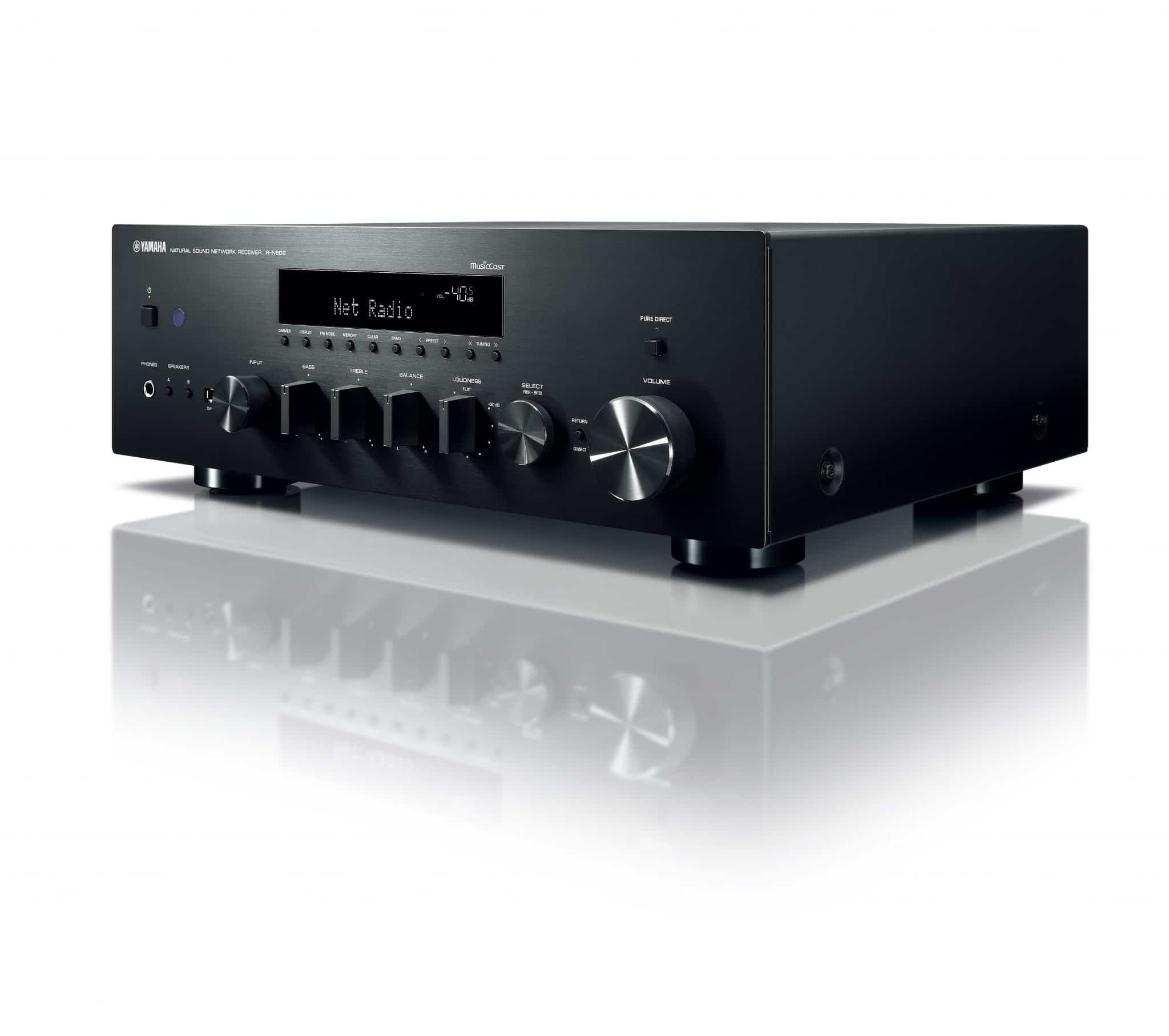
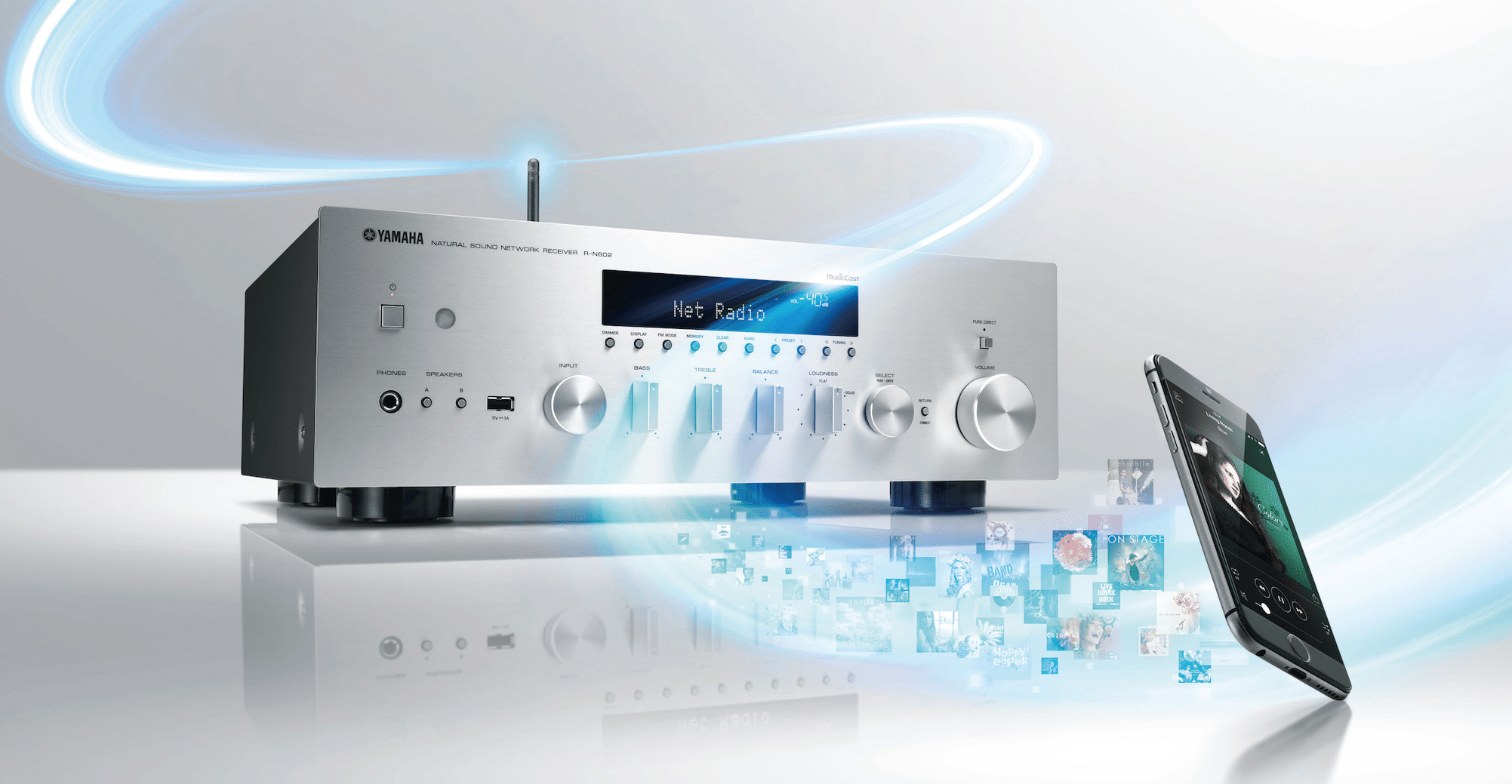
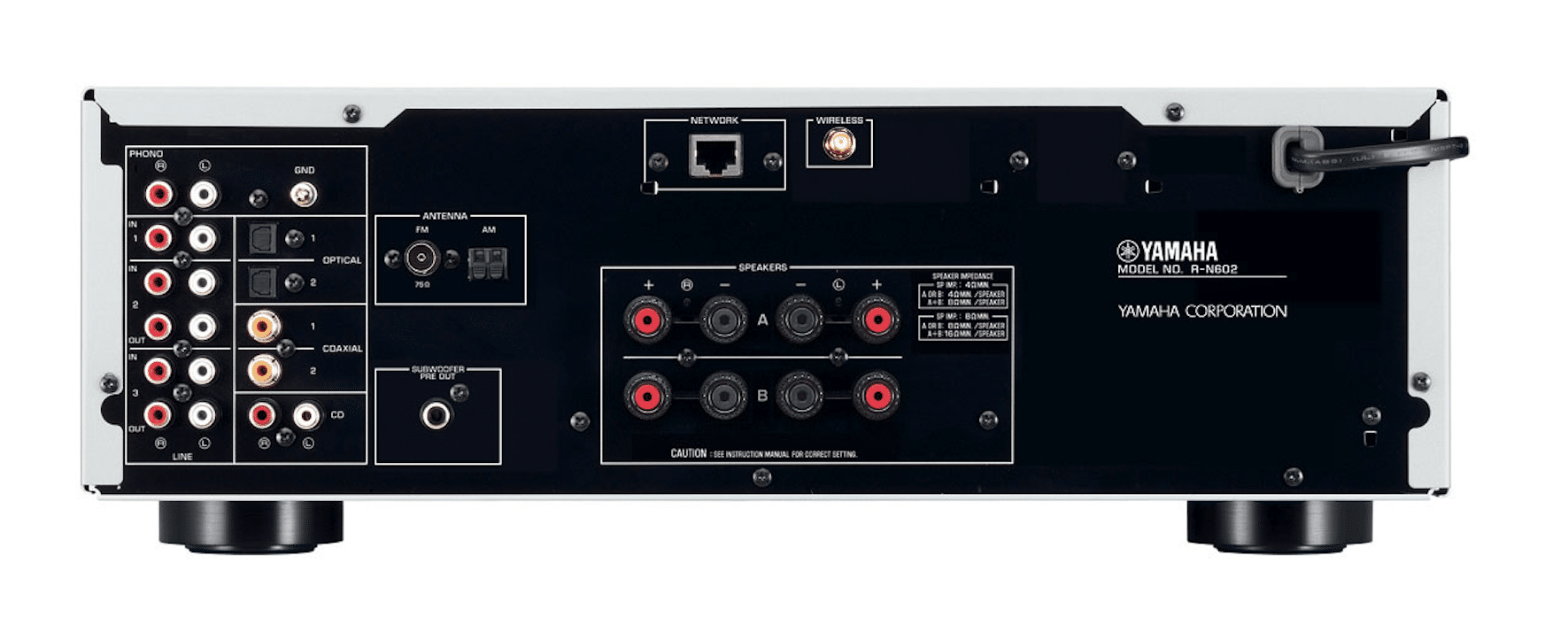
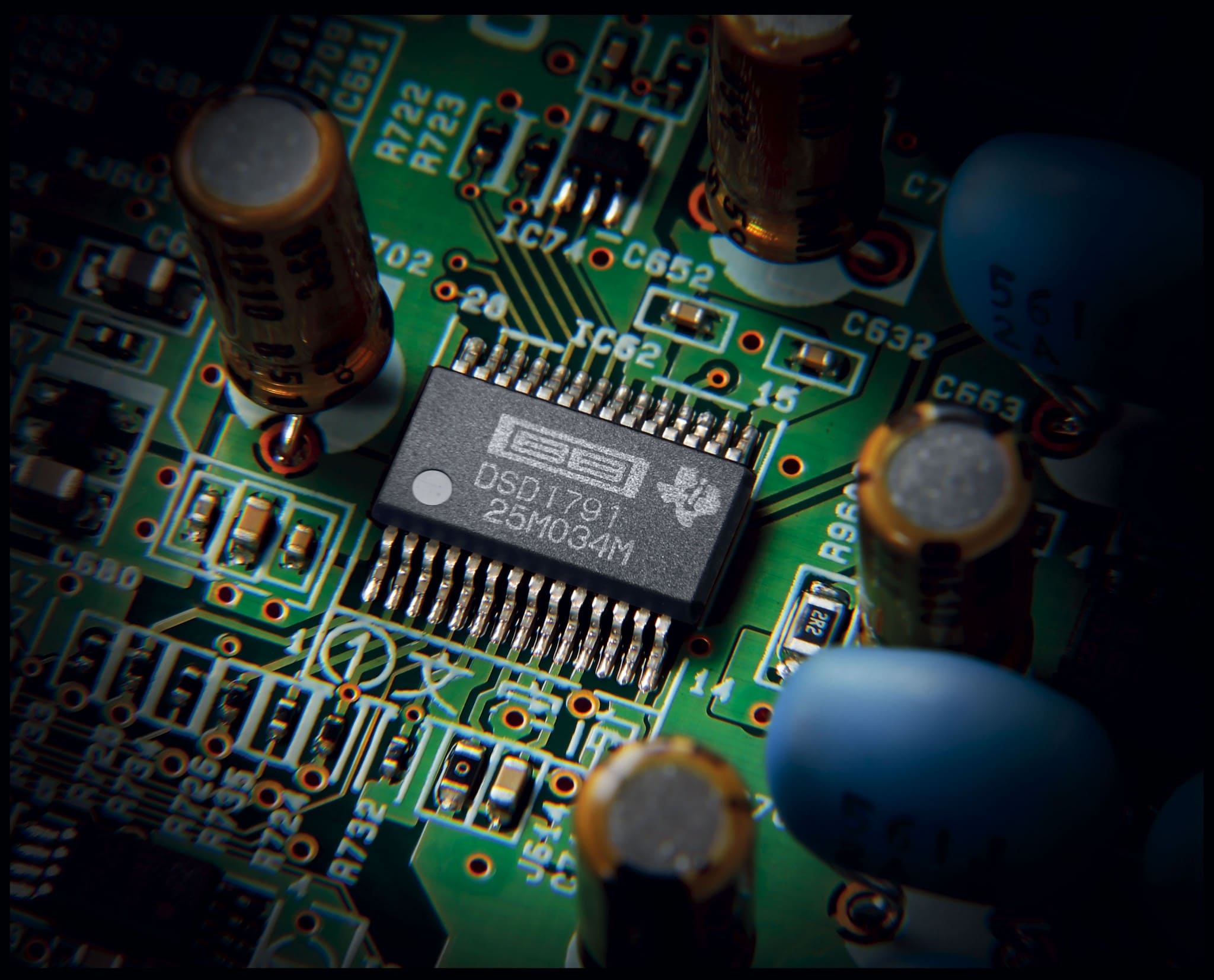
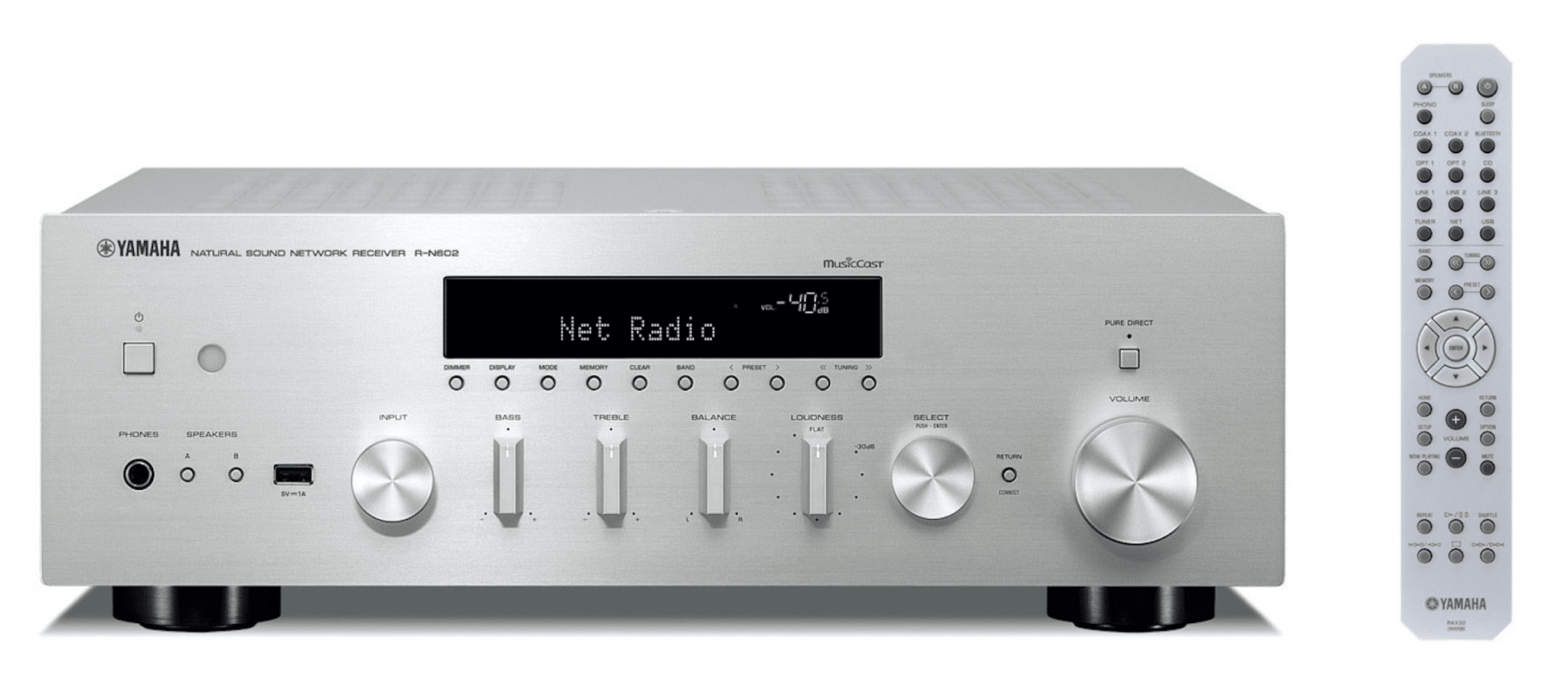


Yes Paul. Thanks for the reply. I am considering a budget around /- 600 Dollars. My main audio source is airplay.
Hi Rupesh – if AirPlay is your primary source then I would suggest that a standard 2-channel amplifier is not for you. At that budget, I would look at a quality AV receiver which also gives you a good quality amplifier module. On that basis, I’d look closely at the Onkyo TX-NR686 AV Receiver which is around $600.
Warm thanks for patiently guiding me Paul. Wonderful to converse with you. Have a great time. Live Long.
Hi Paul….. I just got a Yamaha receiver 602 only after reading good reviews about it .Paul I need your help regarding the speakers. I have liked QAccoustics 3050i n Polk audio Rti7.kindly help.
Hi Pawan – what’s your budget please?
Hello Paul,
I am looking to purchase either Yamaha R-N803 / R-N602 along with floor speakers either NS 777 / NS 555. Would like to understand if this config would be optimally compatible? If not what are your suggestions.
I am from India / Mumbai in particular and am looking for a stereo system for my house / flat.
Thanks
What’s your budget Joe?
I have the Yamaha R-N803 and love it. I set up the YPAO room correction and YPAO volume (intelligent variable loudness) for low-to-moderate listening volume (to offset the Fletcher Munson curve), and there is nothing like it.
Plus, it has every source one may want: phono, CD, analog inputs, AM/FM tuner, net radio, streaming services, optical, coaxial, built-in DAC, Yamaha Multicast app, multiroom.
I don’t care about the phono input. I switched to CDs in 1987 and high-quality streaming (Qobuz) in 2019 and never looked back.
Could I find something that sounds better? Sure. Could I find something that does much better than this and all in one box? No way.
Thanks for your thoughts, Frank – I’m sure it will be of interest to prospective buyers.
Hi Paul,
I just got a Rega Planar 1 and Dali Spektor 2. I’m hoping to get the cheapest phono amp combo ( ideally under £300) whilst not compromising the sound too much. Would RN602’s phono be a good fit?
Thx
Seb
Hi Seb – that depends. What’s your priority here, sound quality alone or do you also want a selection of Internet services and digital features like streaming?
Hey Paul,
I’d like to prioritise sound first, followed by Bluetooth if possible. I have a budget of £300 and have been wondering if I should just get a rega mini mkII and a cheap behringer pp400 or an integrated amp with phono stage. All that aside, I’m a novice at these stuff ( I didn’t even know an amp is needed for passive speakers until it was too late), and wouldn’t even know if I can tell the difference between good and bad sound.
Hi Seb – this amp is currently on a sale: https://www.cambridgeaudio.com/gbr/en/products/hifi-and-home-cinema/topaz-am10
Get a Rega Fono phono-amp for around £90 from Amazon.
Then buy the most expensive QED cables your can afford from Amazon too. A pair of speaker cables plus a pair of interconnects from the phono amp to the Topaz AM10. Don’t use any cables supplied in boxes, you might as well plug in a pair of shoe-laces.
If you haven’t already got them, look to get speaker stands and shelving your the turntable/amps. Atacama supply good value items.
Thanks Paul for your guidance! I took your advice with a set of QED XT40 cables and they sound great. I had settled for N602 instead as topaz AM10 is out of stock. I’m surprised by the sound difference between streaming and vinyl!!
Glad you’re happy with that Seb – if you need further help in the future, give me a shout.
Hi Paul, Thank you for the comprehensive review. I have been considering this Yamaha receiver to improve my vinyl setup. I currently have a JVC Jl-A40 turntable, a pair of BW DM303 speakers, which I am thinking of not upgrading for now but I am open to suggestions, should you have some on this front. The current receiver is an old Technics SA-GX180. I want to prioritize vinyl for the most part. I would be nice to be able to play streaming services like Spotify in some occasions. My budget is relatively open, I would say up to 1000 euros. Thank you very much!
Hi Rebecca – ok, allow me to focus this question a bit. How important is the streaming aspect to this? How important is it that you have the streaming right now? Is a one box solution important? Is vinyl the priority?
Thanks for the prompt reply, Paul. I would say Vinyl is the priority. The streaming can be added later with a dedicated digital box for that. One box solution is it not required. Cheers!
Okey dokey – and the turntable? A much loved thing or one you could change?
Hi Paul
It can be changed, but for now it is not to be a priority. The same for the speakers, in the future. Therefore, a system that can handle a better turntable/speakers in the future would be ideal. Thank you a lot for the help!
Hi Rebeca – I would look at changing things around and basing your vinyl priority on a secure foundation. You have a decent budget there so I would not want to waste it, I would recommend using it as a secure footing for the future. By all means keep your current system as a ‘second system’ for another room or part of the house. To balance enjoyment now with a solid hifi chain to improve upon in the future, I would look at a Rega Planar 1 turntable (‚Ǩ350 from Amazon). That includes an arm and cartridge. Rega Fono phono amplifier (‚Ǩ135) which performs better than a built in model. Look at a Cambridge Topaz AM10 (‚Ǩ250) amplifier, A pair of Q Acoustic 3020i speakers (‚Ǩ300) and the best Q Acoustic cables you can afford (see Amazon again). This will provide a good start and a solid vinyl base. If/when you need upgrades in the future, give me a shout.
Thank you so much for the good suggestions! I am going to consider them all in my research.